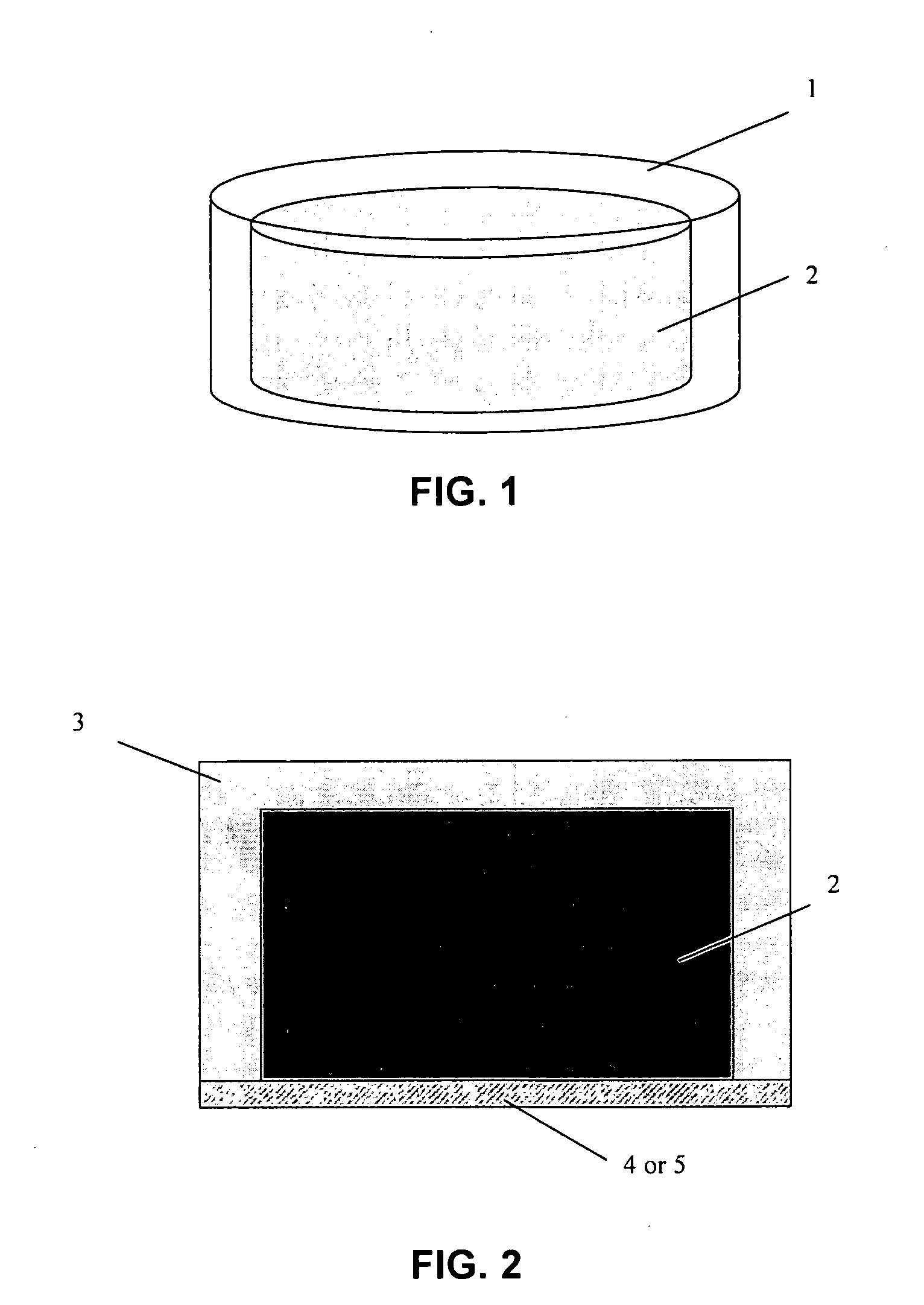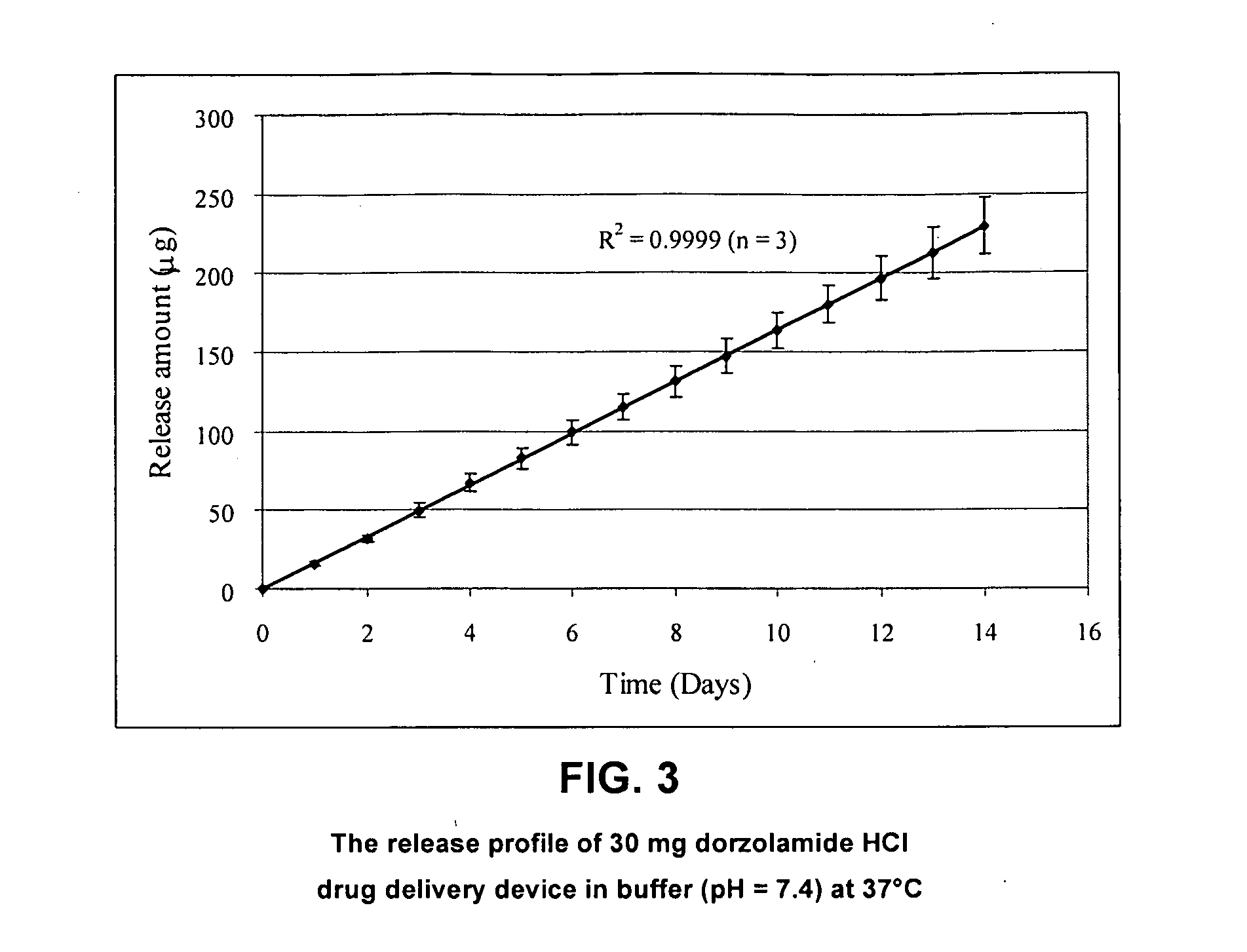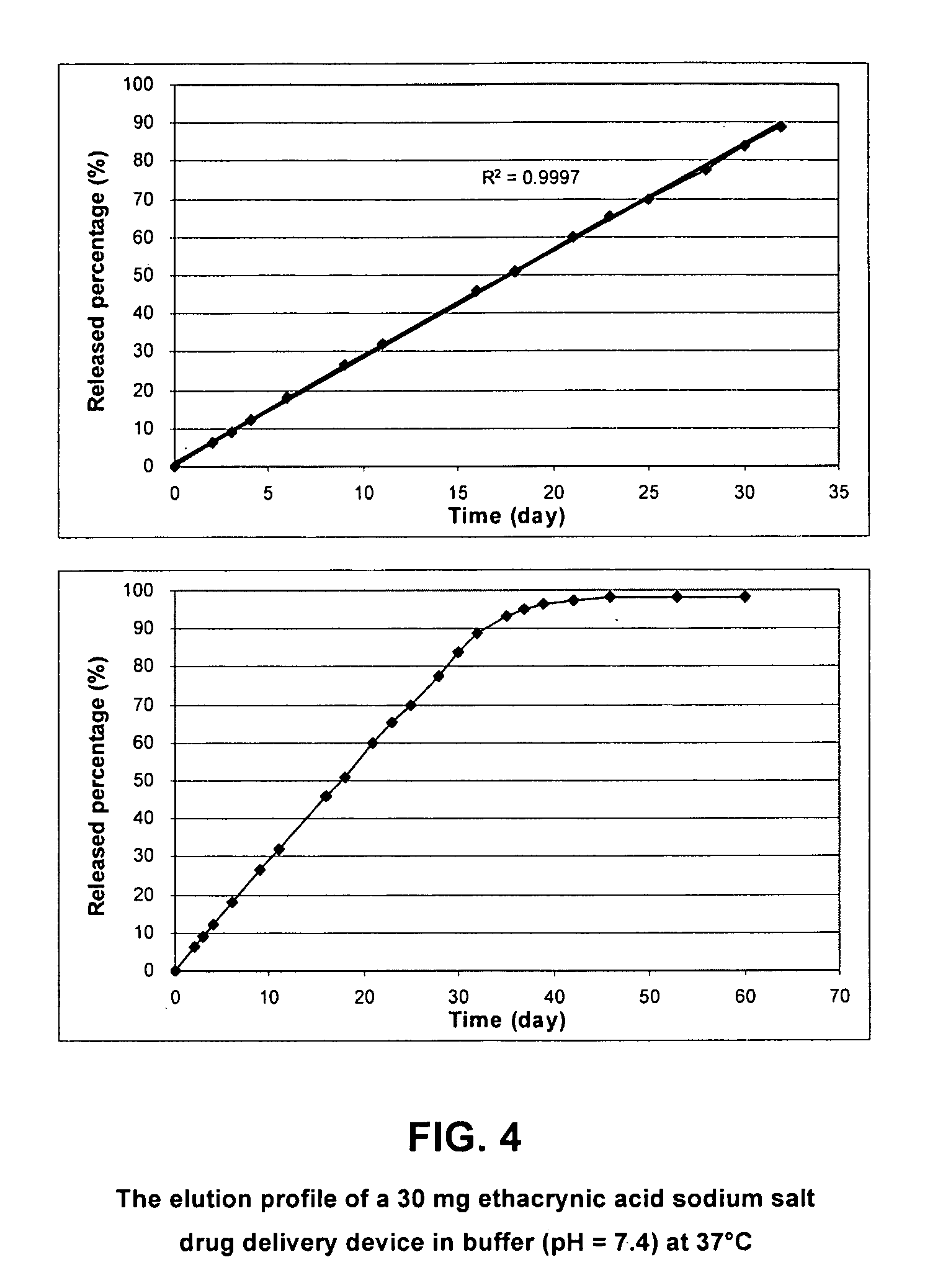Drug delivery devices for delivery of therapeutic agents
a technology of drug delivery and therapeutic agents, applied in the direction of pharmaceutical delivery mechanism, medical preparations, medical science, etc., can solve the problems of high non-compliance with the recommended treatment rate, relatively few tissues that are directly accessible, and complex problem of therapeutic and pharmaceutical agent delivery,
- Summary
- Abstract
- Description
- Claims
- Application Information
AI Technical Summary
Problems solved by technology
Method used
Image
Examples
example 1
Drug Delivery Device Containing Dorzolamide HCl (a High Solubility Drug)
Parameters Tested
[0087]Thickness of permeable EVA film: 40-250 micrometers[0088]Elution rate: 0.1-2 micrograms / hr
[0089]30 mg of dorzolamide HCl (which has high solubility) was compressed at 1000 psi to form a compressed drug pellet with a diameter of 5 mm and a thickness of 1 mm. Next, 15 mg of EVA-25 (vinyl acetate content of 25%; Sigma Chemical Company, St. Louis, Mo.) was loaded into a custom-made die set and heated to 100° C. for 1 minute. The polymer was compressed at 100 psi and allowed to cool to room temperature. When prepared in this manner, this EVA-25 polymer membrane is impermeable to water. The molded polymer cup was removed from the die set and the compressed drug pellet was loaded into the cup with the top side uncovered.
[0090]EVA-40 (Sigma Chemical Company, St. Louis, Mo.) was loaded into a film maker (International Crystal Laboratory) with a 150-micrometer spacer and heated to 75° C. for 4 minut...
example 2
Drug Delivery Device Containing Ethacrynic Acid Sodium Salt (a High Solubility Drug)
Parameters Tested
[0092]Thickness of EVA film: 100-500 micrometers[0093]Elution rate: 5-50 micrograms / hr
[0094]30 mg of ethacrynic acid sodium salt (Sigma Chemical Company, St. Louis, Mo.) (which has high solubility), was compressed at 1000 psi to form a compressed drug pellet with a diameter of 5 mm and a thickness of 1 mm. 15 mg of EVA-25 (Sigma Chemical Company, St. Louis, Mo.) was loaded into a custom-made die set and heated to 100° C. for 1 minute. The polymer was compressed at 100 psi and allowed to cool to room temperature. When prepared in this manner, this polymer membrane was impermeable to water. The molded polymer cup was removed from the die set and the compressed drug pellet was loaded into the cup with the top side uncovered.
[0095]EVA-40 (Sigma Chemical Company, St. Louis, Mo.) was loaded into a film maker (International Crystal Laboratory) with a 25-micrometer spacer and heated to 75° C...
example 3
Drug Delivery Device Containing AR-102 Free Acid (a Moderately Soluble Drug)
Parameters Tested
[0098]Thickness of EVA film: 120-250 micrometers[0099]Elution rate: 0.04-0.7 micrograms / hr
[0100]4 mg of AR-102 free acid (which has moderate solubility) was compressed at 1000 psi to form a compressed drug pellet with a diameter of 3 mm and a thickness of 1 mm. 8 mg of EVA-25 (Sigma Chemical Company, St. Louis, Mo.) was loaded into a custom-made die set and heated to 100° C. for 1 minute. The polymer was compressed at 100 psi and allowed to cool to room temperature. This was the impermeable polymer. The molded polymer cup was removed from the die set and the compressed drug pellet was loaded into the cup with the top side uncovered.
[0101]EVA-40 (Sigma Chemical Company, St. Louis, Mo.) was loaded into a film maker (International Crystal Laboratory) with a 200-micrometer spacer and heated to 75° C. for 4 minutes. The polymer was compressed at 200 psi for 1 minute and allowed to cool to room te...
PUM
 Login to View More
Login to View More Abstract
Description
Claims
Application Information
 Login to View More
Login to View More - R&D
- Intellectual Property
- Life Sciences
- Materials
- Tech Scout
- Unparalleled Data Quality
- Higher Quality Content
- 60% Fewer Hallucinations
Browse by: Latest US Patents, China's latest patents, Technical Efficacy Thesaurus, Application Domain, Technology Topic, Popular Technical Reports.
© 2025 PatSnap. All rights reserved.Legal|Privacy policy|Modern Slavery Act Transparency Statement|Sitemap|About US| Contact US: help@patsnap.com



